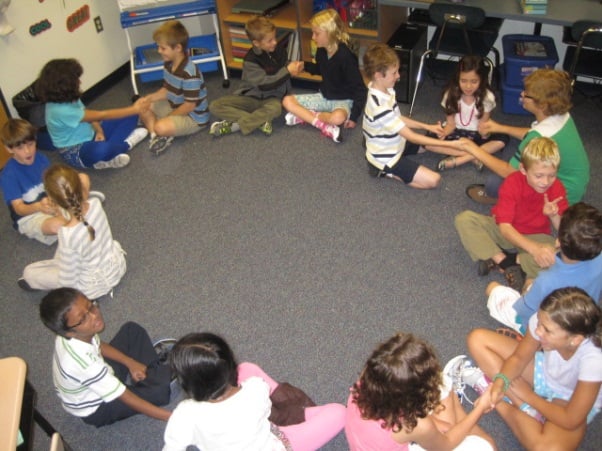Of course
kids will be kids… they talk out of turn, run down the hall, jump to be first
in line and they forget to keep their hands to themselves. Expect your students to be, well, kids. Kids will make mistakes, break rules and try
out your patience. It’s their job! Your job is to keep children safe and class
time productive, even when their self-control is failing them.
Redirecting Language:
Giving Clear, Nonnegotiable Instructions*
Redirecting
language helps students act differently and at the same time preserves their dignity
and sense of belonging to the group.
Effective redirecting language:
- is direct and specific
- names the desired behavior
- is brief
- sets firms limits (if necessary, action follows words)
- makes a statement instead of asking a question
Situation: Your
students are sitting on the floor, listening to a story or ready for Kehillah
(morning) Meeting. Jacob is using his
hands to pester the child next to him.
Redirecting language is quick and to the point:
“Jacob, hands in your lap.”
Situation: Students are working independently at
the tables. Rebecca leans across the
table and is trying to engage Rachel in a conversation, not allowing Rachel to
concentrate. Redirecting language is
specific and clear:
“Rebecca take your paper and sit at
this table,
where you can pay attention to your work.”
Situation: The
class is walking towards T’filah (prayer time).
Eli takes off in a run.
Redirecting language states the desired outcome and commands respectful
behavior.
“Walk.”
Situation:
You are about to give the directions, but students are already leaving the
circle to head to their tables. Again, clear
commands, respectful behavior.
“Stop… Wait to hear the directions.”
Situation:
The students are busy working in groups, noisy and eager to create skits to
present to their classmates. The teacher
wants to issue a reminder of what to include in the skits. The teacher starts talking, giving a series
of directions. A few students turn to listen, and begin to
follow the directions, then move on to something else. Redirecting language is brief and to the
point:
Teacher uses the Quiet Signal, and
waits for everyone to look at him.
Or says; “Stop, all eyes on me.” Once everyone is listening, then the teacher
gives simple and clear directions.
Situation: The teacher wants the student who is walking
about the room to take a seat. The
teacher says, “Will you take a seat now?”
Or a student continues to talk when the teacher is waiting to get
started, and the teacher says, “Are you ready to listen?” In these cases, the student might be thinking
“NO”, because a choice is implied. Redirecting language tells the student what
to do.
“Eyes on me” or “Sit here.”
Examples of redirecting language:
“Tell your
feet to hold still.”
“Pick up
the paper on the floor.”
“Wait for
the blessing before starting.”
“You have
one more minute to finish.”
“Put the
scissors down.”
The key to
using redirecting language is to think in terms of using positive actions in
terms of a statement. On the metro,
driving in the car, at home with your own children – try it out. Less words is best. Direct and to the point. Say what you want them to do. Wait for this
to happen before you move on.
*Taken
from Responsive Classroom Resource Book ©2014
by Northeast Foundation for Children, Inc.



No comments:
Post a Comment